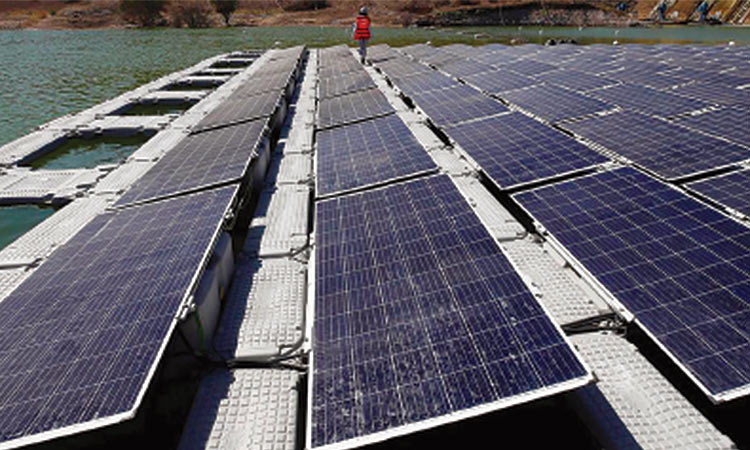Southeast Asia to implement more projects to harness solar energy

A solar energy project in Papua, Indonesia. Associated Press
The region, where power demand is expected to double by 2040, is striving to expand the share of renewable sources as developing nations seek affordable electricity while battling climate change.
Southeast Asia’s cumulative solar photovoltaic (PV) capacity could nearly triple to 35.8 gigawatt (GW) in 2024 from an estimated 12.6 GW this year, consultancy Wood Mackenzie says.
Southeast Asia or Southeastern Asia is a subregion of Asia, consisting of the countries that are geographically south of China and Japan, east of India, west of Papua New Guinea, and north of Australia.
Countries coming under Southeast Asia banner are Indonesia, Vietnam, Thailand, Singapore, Philippines, Malaysia, Cambodia, Laos, Myanmar (Burma), Brunei and Timor-Leste.
Vietnam leads the pack with a cumulative solar PV installation of 5.5 GW by this year, or 44% of the total capacity in the region, said Rishab Shrestha, Woodmac’s power and renewables analyst. This compares with 134 MW last year.
Among the encouraging signs for the solar industry was a recent auction for a 500 megawatt (MW) solar project in Malaysia of which 365 MW were bid at a price lower than the country’s average gas-powered electricity, said Yeo Bee Yin, minister of energy, science, technology, environment and climate change.
“For the first time in the history of Malaysia we have a large-scale solar energy costs that is less than gas, Yeo said at the Singapore International Energy Week.
“We now finally have an alternative energy that is cheaper than gas to replace our peak energy demand at midday.”
Malaysia has set a target to increase its renewable energy in electricity generation from current 6% to 20% by 2025, and a majority of this would be driven by solar.
The country also plans to open at least another 500 MW tender in the second quarter next year, Yeo said.
Singapore has also targeted at least 2 gigawatt (GW) peak of solar power capacity by 2030, or more than 10% of current peak electricity demand, potentially replacing natural gas which generates 95% of the country’s power now.
“This being presented by the Singaporean authorities is very interesting as this points towards firm political determination to go towards a low-carbon economy in a constrained world,” said Francesco La Camera, Director-General of International Renewable Energy Agency (IRENA).
Keisuke Sadamori, the International Energy Agency (IEA) director for energy markets and security said: “There needs to be some good measures to ensure that investors feel confident that their money could be returned in a relatively reasonable period.”
Still, the mushrooming of solar PV in Vietnam has exceeded its grid capacity by 18%, Woodmac’s Shrestha said, underscoring the need for further investments across power sector.
“The approved capacity for the Ninh Thuan and Binh Thuan provinces amounts to 5 GW, more than double the grid usable capacity,” he said.
Meanwhile, Goldman-backed ReNew says Andhra Pradesh problems could hurt India’s renewables target. Investors could be put off India by Andhra Pradesh state’s difficult relationship with renewable energy companies, Sumant Sinha, chair of Goldman Sachs-backed ReNew Power, said. India, the world’s third-largest emitter of greenhouse gases, wants to raise its renewable energy capacity to 500 gigawatts (GW), or 40% of total capacity, by 2030.
The southern state of Andhra Pradesh is among the largest adopters of renewable energy and ReNew Power, about 49% owned by Goldman Sachs, is India’s largest renewable energy company.
But the state has been curtailing power procurement from renewable energy companies, citing high prices, and pushed to renegotiate its supply contracts with them.
“There are questions on what this means for sanctity of contracts in India. That has made investors jittery,” Sinha told Reuters.
Foreign investment is central to India’s green energy ambitions, and a slowdown in overseas funding could hurt Prime Minister Narendra Modi’s commitment to increase adoption of renewable energy.
“The longer the issue carries on, the less likely (the renewable energy) target will be met,” Sinha said.
ReNew has an installed capacity of over 5 gigawatts (GW) and plans to add another 3 GW by mid-2021.
Reuters







